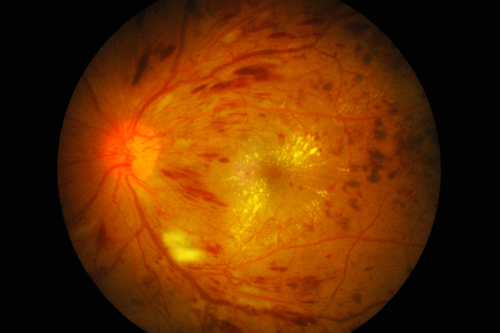 Porton Down, UK-based ophthalmology company KalVista Pharmaceuticals recently announced that it has begun a Phase I First in Human trial of its novel plasma kallikrein inhibitor, KVD001, for the treatment of diabetic macular edema.
Porton Down, UK-based ophthalmology company KalVista Pharmaceuticals recently announced that it has begun a Phase I First in Human trial of its novel plasma kallikrein inhibitor, KVD001, for the treatment of diabetic macular edema.
The study, conducted by Dr. Jennifer K. Sun of the Beetham Eye Institute under KalVista’s open Investigational New Drug Application from the U.S. Food and Drug Administration (FDA), will investigate the safety, tolerability, and pharmacodynamics of KVD001 in subjects with diabetic macular edema and reduced vision.
The plasma kallikrein inhibitor, which will be delivered by intravitreal injection, is a serine protease that has been shown to contribute to blood vessel leakage and thickening of the retina. Scientific evidence thus regards it as an exciting potential new therapeutic opportunity for reducing retinal vascular permeability and treat diabetic macular edema, in patients whose disease process is completely of partially driven by the plasma kallikrein pathway.
This open label, single ascending dose study is the first step to investigate the hypothesis that plasma kallikrein plays an important role in the disease process behind diabetic macular edema in many patients.
Although diabetic macular edema is a leading cause of adult visual loss in developed countries, it lacks effective treatment. This new approach, Jennifer Sun says in a press release, could serve as a treatment of the condition that targets different molecular pathways than currently available therapies.
In order to be eligible for this clinical trial, participants must have a confirmed diagnosis of Type I or Type II diabetes mellitus and a best corrected visual acuity, using Early Treatment Diabetic Retinopathy Study electronic visual acuity testing, of between 20/40 and 20/400 in the study eye.


